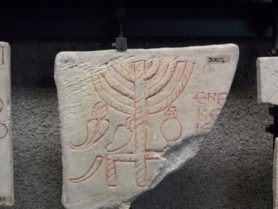PEACE Project
What is PEACE?
PEACE stands for Portal of Epigraphy, Archaeology, Conservation and Education on Jewish Funerary Culture.
When studying the history of a people one may learn a myriad of details from the ways in which they chose to remember—and consequently immortalize—their dead. These details, best summarized by the term “funerary culture”, are found at the heart of this project. The PEACE portal explores Jewish funerary culture through the ages. In this initial phase, it focuses on epigraphical aspects: the inscriptions recorded on stone, plaster, or gold-glass. The other aspects, namely archaeology, conservation, and education, will be added to the portal in the coming years.

Why a portal?
Since the sources on Jewish funerary culture cover a vast temporal and spatial expanse, the only effective way to comprehensively analyze them is by computerized means. A great amount of the data is already digitized and available online, yet it is spread across various websites, whose databases are unrelated to one another. Consequently, scholars wishing to explore a concept or a phenomenon over a long period of time or across a wide geographical range, cannot. The PEACE portal will provide for the first time the means to do so.
Who contributes to PEACE?
At the moment (May 2022) the PEACE project comprises three major partners: Utrecht University, where the project is based, including the FIJI project, the Steinheim Institute Epidat project, and the Brown University project Inscriptions of Israel/Palestine. Additionally, individual partners are contributing to the PEACE portal, for instance Dr. Elíshabá (Isabel) Mata López from the University of Salamanca, Dr. Sonia Fellous from the CNRS, France, and Mr. Haim Sidor (independent scholar, Safed).
Where do we go from here?
The PEACE portal is now found in its pilot stage, with a focus on epigraphic data. In the coming years we plan to complete the other sections of the portal and add new partners from all fields: archaeology, conservation, and education. The portal will thus become a central hub of Jewish funerary culture through the ages, open access and available to all. It will enable a scholarly analysis of different types of sources (epigraphic, archaeological) as well as joint projects of conservation and education. Additionally, the PEACE portal will serve as a digital archive of physically endangered Jewish heritage. Summing up, in more than one sense, this project starts from the ground, but given its prospects, the sky is the limit.

